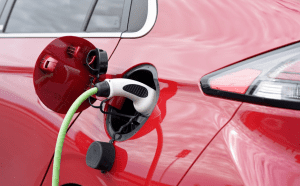Elasto Proxy is winding down our tenth year of blogging with a look back at our most-viewed content of 2021. Whether you’re new to the blog or have read all 492 posts, we think you’ll want to know what resonated with readers during a year that’s been like no other. At a time of supply chain constraints and workforce challenges, you might find some surprises in the list below.
Although several of 2021’s Top 10 blogs were written this year, most were posted in previous years. That proves of the power of quality content, regardless of whatever changes Google makes to its search algorithms. Our Top 10 list also demonstrates Elasto Proxy’s continued commitment to helping engineering, purchasing, operations, and C-suite personnel do their jobs better – and with greater ease.
Let’s take a look at the hottest topics in terms of total 2021 views.
#1 Nitrile vs. Neoprene: What’s the Difference
Nitrile and neoprene are materials with similar properties but some important differences. Both elastomers provide good resistance to compression set and tearing. They withstand the same range of service temperatures, too. Some grades of neoprene offer excellent resistance to abrasion, but nitrile is known for its abrasion resistance at elevated temperatures.
#2 ATSM D2000 Specifications for Rubber Materials
ASTM D2000 is an industry specification that gives buyers and suppliers a standard way to describe rubber. That’s important because it’s not enough to ask for “black rubber” or even a specific compound such as EPDM or silicone. With its lettered and numbered designations, ASTM D2000 calls-out physical properties, units of measure, and more.
#3 Foam Rubber vs. Sponge Rubber: What’s the Difference
The difference between foam rubber vs. sponge rubber begins with ingredients, continues through the material production process, and extends to molecular structure. Although the terms “foam rubber” and “sponge rubber” are sometimes used interchangeably, these elastomers have differences that may not be readily apparent. They’re also used in different types of sealing and insulation applications.
#4 Physical Properties of Rubber: What Engineers Need to Know
When designing custom seals, gaskets, or insulation, engineers need to know whether an elastomer’s physical properties can meet the application’s requirements. These properties include hardness, tensile strength, tensile modulus, elongation, resilience, compression set, tear resistance, abrasion resistance, and specific gravity. This article provides a high-level look at each property and how it’s measured.
#5 Locking Gasket Guide: Window Gasket Selection and Installation
Locking gaskets are lengths of rubber that lock into place to provide a secure seal between stationary glass and a body panel. They can be self-locking or have a key. Window gaskets that are too small won’t fit over the glass but forcing them into place can cause the glass to break. This guide explains how to select the right rubber window channels and describes best practices for installing them.
#6 Rubber and Plastic Truck Parts
Rubber and plastic truck parts are used in the front end of tractor trailers as well as in the engine compartment and the cabin. These components seal out wind and weather, convey fluids and fuel, and help support larger assemblies. Elasto Proxy custom-fabricates seals, gaskets, and insulation, and can supply you with molded rubber and plastic parts so that you can simplify your supply chain.
#7 Shelf Life of Rubber Gaskets
Buying and storing large quantities of gaskets can help to reduce unit costs, but rubber doesn’t last forever. Shelf life, the storage period prior to gasket installation, varies by material type. Temperature, humidity, ozone, and exposure to ultraviolet light (UV) can also affect the shelf life of rubber products. By understanding these factors, you can make stronger procurement decisions.
#8 Gasket Design Guide: Five Things You Need to Know
Elasto Proxy’s Gasket Design Guide provides an overview of five things that engineers need to know when designing sealing solutions. From the size of the gap to shape of the profile, and from the hardness (durometer) of the rubber to compound selection and fastening methods, knowing these five things can help you to make the right design decisions.
#9 Engine Compartment Insulation for Heat and Sound Reduction
Engine compartment insulation keeps heat and noise in the engine bay from reaching a vehicle’s interior. Thermal insulation protects drivers, operators, and passengers from high temperatures that can also damage on-board electronics such as GPS tracking systems. Acoustic insulation dampens damaging sound-induced vibrations and protects personnel from decibel levels that can harm human hearing.
#10 Gasket Compression Explained
Rubber gaskets is resilient, but only to a point. Compressing a rubber gasket within allowable limits forms a reliable seal. If the gasket is over-compressed, however, the rubber won’t rebound when the compressive stresses are removed. This creates a gap between the rubber gasket and the surface of the enclosure. Gaps cause leaks – and seals that leak won’t support your larger product designs.
How Can We Help You in 2022?
Elasto Proxy is a custom fabricator and distributor that specializes in low-to-medium volumes of rubber and plastic products such as seals, gaskets, and insulation. We also supply molded rubber parts such as silicone hose connectors, molded plastic parts such as the pedal pads on hospital pads, and rubber-to-metal bonded assemblies such as anti-vibration mounts.
Although it’s impossible to predict what 2022 will hold, Elasto Proxy knows one thing for sure. We look forward to continuing to serve you and to helping you address your business and technical challenges during these challenging times. We also invite you to continue reading our blog and help us celebrate our 500th blog entry in the first quarter of 2022.
Until then, be well and enjoy the holiday season.










